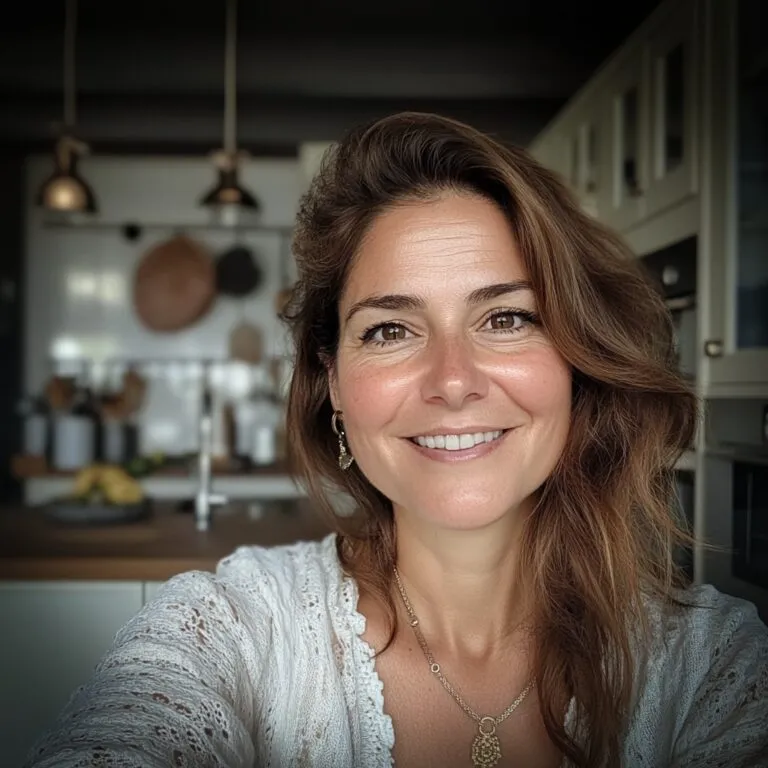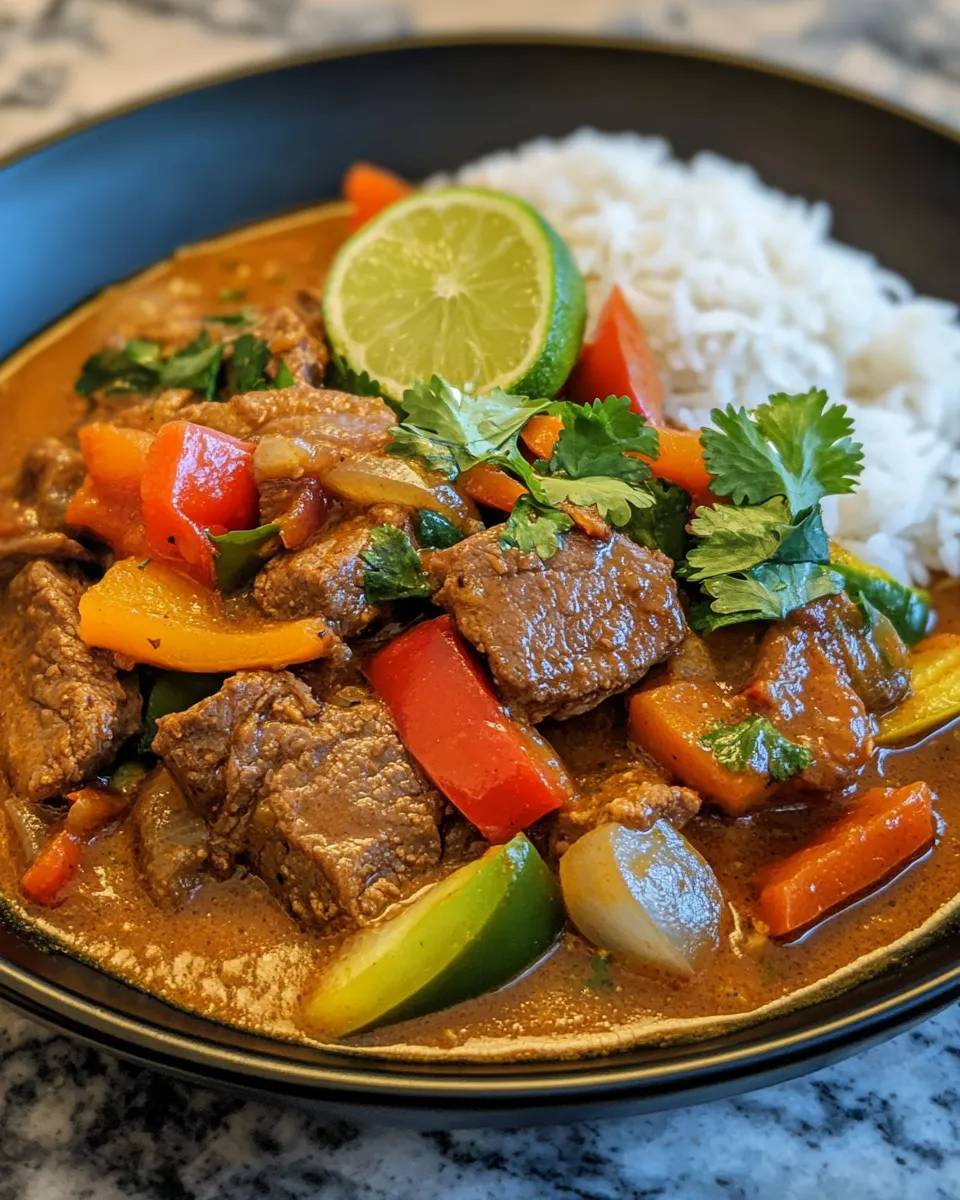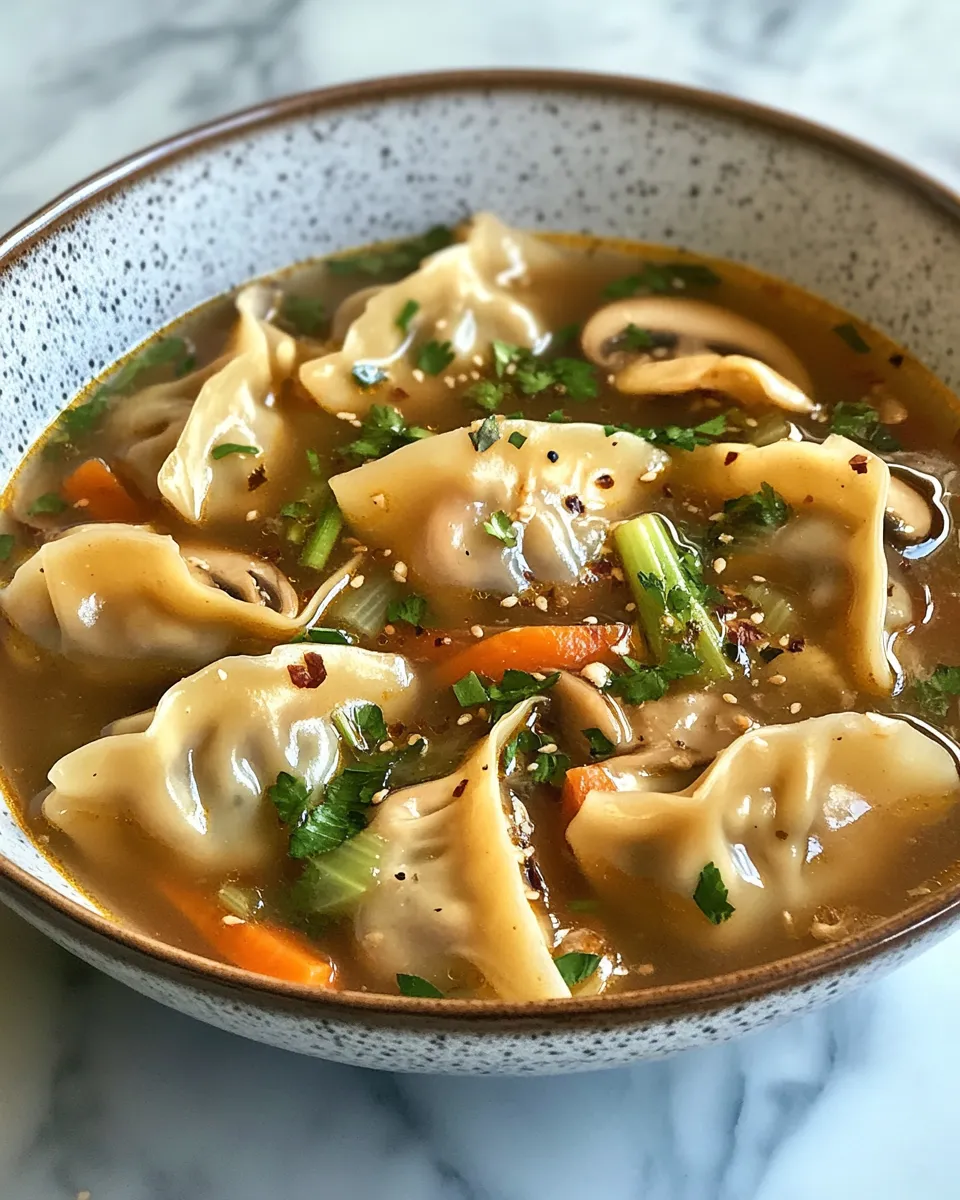There’s something undeniably special about gathering around a table with friends and family, sharing laughter, stories, and a meal that fills the room with irresistible aromas. The Flavor-Packed Rosemary Garlic Prime Rib Roast is the centerpiece of such gatherings, perfect for holiday celebrations, Sunday family dinners, or any occasion where you want to impress without stress.
This recipe was inspired by generations of home cooks who have cherished prime rib as a symbol of togetherness. The combination of fresh rosemary, fragrant garlic, and a perfectly seared crust creates a taste that’s both comforting and sophisticated. It’s a dish that turns an ordinary evening into a memorable experience, inviting everyone to slow down, savor each bite, and enjoy the warmth of a shared meal. Whether it’s your first time roasting prime rib or you’re a seasoned chef, this recipe is designed to guide you to a flavorful, tender, and perfectly cooked roast every time.
Ingredients
-
1 (4–6 lb) prime rib roast, bone-in or boneless
-
4 tablespoons olive oil
-
6 cloves garlic, minced
-
2 tablespoons fresh rosemary, chopped
-
1 tablespoon fresh thyme, chopped
-
1 tablespoon coarse salt
-
1 teaspoon freshly ground black pepper
-
1 teaspoon onion powder
-
1 teaspoon paprika
-
1 cup beef broth or water (for roasting pan)
-
Optional: fresh rosemary sprigs for garnish
Directions
-
Prepare the Prime Rib
Remove the prime rib from the refrigerator at least 1 hour before cooking to allow it to reach room temperature. Pat it dry with paper towels, ensuring the surface is completely dry. This step is essential for achieving a perfectly seared crust. -
Make the Herb and Garlic Rub
In a small bowl, combine minced garlic, chopped rosemary, thyme, olive oil, salt, pepper, onion powder, and paprika. Mix thoroughly to form a paste. -
Apply the Rub
Rub the herb and garlic mixture all over the prime rib, pressing gently to adhere. Ensure every inch is coated, including the sides and any exposed bones. -
Preheat the Oven
Preheat your oven to 450°F (230°C). While the oven heats, allow the seasoned prime rib to rest on a cutting board. -
Prepare the Roasting Pan
Place a wire rack inside a roasting pan. Add 1 cup of beef broth or water to the bottom of the pan to keep the meat moist during roasting. Place the prime rib on the rack, fat side up, which allows the fat to baste the meat naturally. -
Initial High-Temperature Roast
Roast the prime rib in the preheated oven for 15 minutes. This high-heat method helps develop a beautiful golden-brown crust packed with flavor. -
Lower the Oven Temperature
Reduce the oven temperature to 325°F (165°C). Continue roasting until the internal temperature reaches your desired doneness: 120–125°F for rare, 130–135°F for medium-rare, 140–145°F for medium, or 150–155°F for medium-well. Use a meat thermometer inserted into the thickest part of the roast to ensure accuracy. -
Rest the Roast
Once the roast reaches the desired internal temperature, remove it from the oven and tent loosely with foil. Allow it to rest for 20–30 minutes. Resting lets the juices redistribute, ensuring a tender, juicy prime rib. -
Carve and Serve
Carve the prime rib against the grain into thick slices. Serve immediately with pan drippings, roasted vegetables, or your favorite side dishes. Garnish with fresh rosemary sprigs for an elegant presentation.
Tips for the Perfect Prime Rib
-
Choosing the Right Cut: Bone-in prime rib tends to retain more flavor and moisture, but a boneless roast works well if you prefer easier carving.
-
Room Temperature Matters: Always let the roast sit out before cooking. Cold meat directly from the fridge can result in uneven cooking.
-
Thermometer Is Key: A meat thermometer is the most reliable way to achieve the perfect doneness. Avoid guessing, as overcooked prime rib can dry out quickly.
-
Resting Time Is Crucial: Never skip resting; it’s the step that separates a good roast from a spectacular one.
-
Customizable Flavors: Feel free to experiment by adding crushed black pepper, smoked paprika, or even a hint of lemon zest to the rub for an extra layer of flavor.
Side Dish Pairings
A prime rib roast shines best when paired with complementary sides that balance its rich flavors. Here are some ideas:
-
Garlic Mashed Potatoes: Creamy, buttery, and lightly seasoned, mashed potatoes are a classic accompaniment.
-
Roasted Vegetables: Carrots, Brussels sprouts, and parsnips tossed in olive oil and herbs roast beautifully alongside the prime rib.
-
Yorkshire Pudding: A traditional British side, these airy, golden pastries soak up the meat’s juices perfectly.
-
Caesar Salad: A crisp salad with a tangy dressing adds freshness to the meal.
-
Horseradish Cream Sauce: A slightly spicy sauce cuts through the richness of the beef and complements its flavor beautifully.
Cooking Methods Variations
While oven-roasting is the most traditional method, there are a few variations to explore for different textures and flavors:
-
Reverse Sear Method: Slow-roast at a low temperature until almost done, then sear at high heat for a crispy crust.
-
Sous Vide: Cook the prime rib in a water bath to precise temperature, then sear in a hot pan for a perfect crust.
-
Grill-Roasted: For a smoky flavor, finish the roast on a charcoal or gas grill after initial oven roasting.
Each method brings out unique characteristics in the prime rib while keeping it tender and flavorful.
How to Achieve a Crispy Crust
The hallmark of a great prime rib roast is a flavorful, crispy crust. Here’s how to get it right:
-
Dry the roast thoroughly before seasoning. Moisture on the surface prevents browning.
-
Use a combination of high heat at the beginning of roasting and spices like paprika to encourage caramelization.
-
Avoid covering the roast during the initial sear; foil can steam the surface and reduce crispiness.
Making It a Memorable Occasion
A prime rib roast isn’t just food—it’s an experience. Setting the table, selecting complementary wines or non-alcoholic beverages, and choosing fresh garnishes elevate the meal. Consider using fresh herbs, roasted garlic, or even a drizzle of olive oil for a polished presentation. Share stories or traditions that make the meal special, turning the dinner into a memory rather than just a recipe execution.
Why This Recipe Works
This Flavor-Packed Rosemary Garlic Prime Rib Roast recipe works because it balances simplicity and flavor. The herb and garlic rub enhances the natural beef flavor without overpowering it. Cooking at high heat first creates a rich crust, while finishing at a lower temperature ensures even doneness. Resting guarantees juicy, tender slices every time. The result is a roast that looks impressive, tastes incredible, and is approachable for home cooks of all skill levels.
Prep Time, Cook Time, Total Time, Yield
-
Prep Time: 20 minutes
-
Cook Time: 2–3 hours (depending on size and desired doneness)
-
Total Time: 2 hours 20 minutes – 3 hours 20 minutes
-
Yield: Serves 6–8 people
Notes
-
Adjust seasoning amounts based on the size of your prime rib.
-
Leftovers can be repurposed into sandwiches, salads, or stir-fries.
-
Ensure your roasting pan fits comfortably in the oven and allows for air circulation.
-
Always slice against the grain for maximum tenderness.
Frequently Asked Questions
Can I cook the prime rib without the bone?
Absolutely! A boneless prime rib roast is a great option, especially if you prefer easier carving and less handling of the meat. It cooks slightly faster than a bone-in roast and can still be incredibly flavorful when seasoned properly. The main difference is that a bone-in prime rib tends to retain more moisture and adds an extra layer of flavor, as the marrow and bones subtly infuse the meat during cooking. If you’re aiming for traditional presentation and maximum flavor, bone-in is ideal. However, for simplicity and convenience, a boneless roast will still give you tender, juicy results that impress at the table.
How do I know when the prime rib is done?
The most reliable method is to use a meat thermometer. Cooking times can vary depending on the size of your roast, so relying on temperature rather than the clock is key. For rare, aim for an internal temperature of 120–125°F; medium-rare is 130–135°F, medium is 140–145°F, and medium-well is 150–155°F. Keep in mind that the temperature continues to rise slightly while the roast rests outside the oven, so removing it a few degrees before your target temperature ensures perfect doneness. In addition to temperature, you can also observe the juices: they should run clear rather than pink when fully cooked to your desired level.
Can I make this ahead of time?
Yes, this recipe is very forgiving and can be prepared ahead of time. You can season the prime rib and refrigerate it overnight, which actually helps the flavors penetrate deeper into the meat. When ready to cook, allow the roast to come to room temperature before placing it in the oven—this step ensures even cooking throughout the roast and prevents the exterior from overcooking while the interior warms up. Preparing it ahead also makes hosting easier, as much of the work is done in advance, leaving you free to focus on side dishes and entertaining your guests.
How should I store leftovers?
Leftover prime rib can be stored safely and still taste delicious. Wrap the roast tightly in aluminum foil or place it in an airtight container and store it in the refrigerator for up to three days. To reheat, do so gently in the oven at a low temperature to prevent drying out. Alternatively, leftover slices can be used cold for sandwiches, salads, or stir-fries, making the roast not only a centerpiece for your dinner table but also a versatile ingredient for meals in the days that follow.

Flavor-Packed Rosemary Garlic Prime Rib Roast
- Total Time: 2 hours 20 minutes – 3 hours 20 minutes
- Yield: Serves 6–8 1x
Description
There’s something truly special about gathering around the table for a meal that fills the room with irresistible aromas and warmth. The Flavor-Packed Rosemary Garlic Prime Rib Roast is perfect for holiday celebrations, Sunday family dinners, or any occasion where you want to impress your guests with a restaurant-quality dish at home. This recipe combines the richness of prime rib with the fragrant flavors of fresh rosemary and garlic, creating a roast that is both tender and bursting with flavor.
Ingredients
-
1 (4–6 lb) prime rib roast, bone-in or boneless
-
4 tablespoons olive oil
-
6 cloves garlic, minced
-
2 tablespoons fresh rosemary, chopped
-
1 tablespoon fresh thyme, chopped
-
1 tablespoon coarse salt
-
1 teaspoon freshly ground black pepper
-
1 teaspoon onion powder
-
1 teaspoon paprika
-
1 cup beef broth or water (for roasting pan)
-
Optional: fresh rosemary sprigs for garnish
Instructions
-
Remove the prime rib from the refrigerator at least 1 hour before cooking to allow it to reach room temperature. Pat it dry with paper towels.
-
In a small bowl, combine garlic, rosemary, thyme, olive oil, salt, pepper, onion powder, and paprika to make a paste.
-
Rub the herb and garlic mixture all over the prime rib, including the sides and exposed bones if bone-in.
-
Preheat the oven to 450°F (230°C).
-
Place a wire rack inside a roasting pan and add 1 cup of beef broth or water to the bottom. Place the roast fat side up on the rack.
-
Roast in the oven at 450°F for 15 minutes to create a crust.
-
Reduce the oven temperature to 325°F (165°C) and continue roasting until the internal temperature reaches 120–125°F for rare, 130–135°F for medium-rare, 140–145°F for medium, or 150–155°F for medium-well.
-
Remove the roast from the oven and tent loosely with foil. Rest for 20–30 minutes.
-
Carve against the grain into thick slices and serve with pan drippings, roasted vegetables, or favorite sides. Garnish with fresh rosemary sprigs if desired.
Notes
- Prep Time: 20 minutes
- Cook Time: 2–3 hours (depending on size and doneness)








